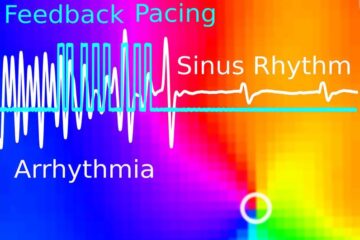Genetic sequence identified for anti-bacterial sea slug protein

Compound could be used to prevent biofilm formation
A Center for Behavioral Neuroscience research team led by Georgia State University biologist Charles Derby has identified the genetic sequence of an anti-microbial protein called Escapin found in the ink of the common Aplysia sea slug or hare. The finding could have implications for the development of new anti-bacterial industrial compounds to prevent the formation of damaging biofilms on marine materials such as ship hulls, fishing traps and nets.
When encountering predators, sea slugs discharge a purple ink containing Escapin which chemically resembles toxins of some venomous snakes. Among its properties, the protein causes foreign cells to lyse or explode and prevents bacteria from growing on sea hares.
Derby, whose team has sequenced, cloned and expressed Escapin, believes a natural or synthetic form of the protein could be manufactured for the marine industry as an environmentally friendly alternative to toxic heavy metals, such as copper, normally applied on materials to prevent biofilm development. Biofilm formation is the precursor to the growth of barnacles and other damaging organisms that must be removed through costly and time-consuming processes.
Derby, who has filed a provisional patent for Escapin’s genetic sequence, plans to submit an academic paper for publication on the protein within the next several months. His research team includes former doctorate student and postdoctoral researcher Paul Johnson, GSU researchers Hsiuchin Yang, Phang Tai and Cynthia Kicklighter.
CBN, a National Science Foundation Science and Technology Center consisting of more than 90 neuroscientists at eight metro Atlanta colleges and universities, conducts research on the basic neurobiology of complex social behaviors. Its programs have lead to a breakthrough treatment for anxiety-related disorders and new understanding of the potential roles of the neurochemicals vasopressin and oxytocin in autism. CBN’s workforce training programs also have contributed significantly to enhancing the diversity of Georgia’s burgeoning biotechnology industry.
Media Contact
More Information:
http://www.emory.edu/All latest news from the category: Life Sciences and Chemistry
Articles and reports from the Life Sciences and chemistry area deal with applied and basic research into modern biology, chemistry and human medicine.
Valuable information can be found on a range of life sciences fields including bacteriology, biochemistry, bionics, bioinformatics, biophysics, biotechnology, genetics, geobotany, human biology, marine biology, microbiology, molecular biology, cellular biology, zoology, bioinorganic chemistry, microchemistry and environmental chemistry.
Newest articles

Wildfire danger to increase due to climate change
WSL Institute for Snow and Avalanche Research (SLF) researchers expect an elevated wildfire danger in the Alpine Foreland from 2040 onwards due to changing meteorological conditions. The danger currently remains…

Advanced Brain Science Without Coding Expertise
Researchers at Helmholtz Munich and the LMU University Hospital Munich introduce DELiVR, offering a new AI-based approach to the complex task of brain cell mapping. The deep learning tool democratizes…

Gentle defibrillation for the heart
Using light pulses as a model for electrical defibrillation, Göttingen scientists developed a method to assess and modulate the heart function. The research team from the Max Planck Institute for…





















